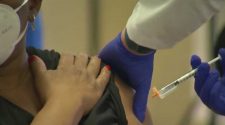Dublin, Feb. 17, 2020 (GLOBE NEWSWIRE) — The “Synthetic Biology Market by Tools (Oligonucleotides, Enzymes, Synthetic Cells), by Technology (Gene Synthesis, Bioinformatics), by Application (Tissue Regeneration, Biofuel, Renewable Energy, Food & Agriculture, Bioremediation) – Global Forecast to 2025” report has been added to ResearchAndMarkets.com’s offering.
The global synthetic biology market is projected to reach USD 19.8 billion by 2025 from USD 6.8 billion in 2020, at a CAGR of 23.9%.
This report analyzes the market for various synthetic biology market and their adoption patterns. It aims at estimating the market size and future growth potential of the synthetic biology market and its subsegments. The report also includes an in-depth competitive analysis of the key players in this market, along with their company profiles, product offerings, and recent developments.
Factors such as the increasing demand for synthetic genes and synthetic cells, wide range of applications of synthetic biology, declining cost of DNA sequencing and synthesizing, increasing R&D funding and initiatives in synthetic biology, and increasing investments in the market are propelling the growth of this market. However, rising biosafety, biosecurity, and ethical concerns related to synthetic biology are likely to hamper the growth of this market.
The oligonucleotides and synthetic DNA segment is expected to grow at the highest rate during the forecast period
Based on tools, the market has been segmented into oligonucleotides and synthetic DNA, enzymes, cloning technology kits, chassis organisms, xeno-nucleic acids, and synthetic cells. In 2019, the oligonucleotides and synthetic DNA segment is expected to register the highest CAGR during the forecast period.
This can be attributed to factors such as the rising demand for synthetic DNA, synthetic RNA, and synthetic genes, which are used in a wide range of applications, such as pharmaceuticals, nutraceuticals, personal care, flavors and fragrances, probiotics, green chemicals, and industrial enzymes.
The genome engineering segment is expected to grow at the highest CAGR during the forecast period
On the basis of technology, the market is segmented into gene synthesis, genome engineering, cloning, sequencing, site-directed mutagenesis, measurement and modeling, microfluidics, nanotechnology, bioinformatics technologies.
The genome engineering segment is expected to register the highest CAGR during the forecast period due to factors such as the increasing use of engineering technologies for manipulating complex genomes, growing therapeutics development for cancer and other diseases, and the increasing technological advances in CRISPR-toolbox and DNA synthesis technologies.
The industrial applications segment is expected to grow at the highest CAGR during the forecast period
Based on application, the synthetic biology market is segmented into medical, industrial, food & agricultural, and environmental applications. The industrial applications segment is expected to grow at the highest CAGR owing to the rising applications of synthetic biology in producing renewable energy, biomaterials & green chemicals, and enzymes.
The Asia Pacific is projected to witness the highest growth during the forecast period
The synthetic biology market is divided into North America, Europe, the Asia Pacific, Latin America, and the Middle East & Africa. In 2019, North America accounted for the largest share of the synthetic biology market.
However, the APAC region is expected to witness the highest growth during the forecast period owing to the growth in the number of pharmaceutical & biopharmaceutical companies, the increasing number of healthcare & life science facilities, and increasing requirements for regulatory compliance in pharmaceutical and biopharmaceutical companies, growing number of international alliances, heavy funding for synthetic biology research, and strong government support.
Furthermore, the increasing focus on the Asia Pacific markets due to their low-cost manufacturing advantage also provides growth opportunities for manufacturers.
Key Topics Covered
1 Introduction
2 Research Methodology
3 Executive Summary
4 Premium Insights
4.1 Market Overview
4.2 Asia Pacific: Market, By Application
4.3 Market: Geographic Growth Opportunities
4.4 Market, By Region (2018-2025)
4.5 Market: Developed vs. Developing Markets
5 Market Overview
5.1 Introduction
5.2 Market Dynamics
5.2.1 Drivers
5.2.1.1 Wide Range of Applications of Synthetic Biology
5.2.1.2 Rising R&D Funding and Growing Initiatives in Synthetic Biology
5.2.1.3 Declining Cost of DNA Sequencing and Synthesizing
5.2.1.4 Increasing Investments in the Market
5.2.2 Restraints
5.2.2.1 Biosafety, Biosecurity, and Ethical Concerns
5.2.3 Opportunities
5.2.3.1 Rising Need for Fuel Alternatives
5.2.3.2 Increasing Demand for Protein Therapeutics and Personalized Medicine
5.2.3.3 Increasing Research in Synthetic Drugs and Vaccines
5.2.4 Challenges
5.2.4.1 Standardization of Biological Parts
6 Synthetic Biology Market, By Tool
6.1 Introduction
6.2 Oligonucleotides & Synthetic DNA
6.2.1 Oligonucleotides and Synthetic Dna to Dominate the Market During the Forecast Period
6.3 Enzymes
6.3.1 Development of Enzymes has Helped in Evolving New Therapies for A Range of Diseases
6.4 Cloning Technology Kits
6.4.1 Need for the Creation of Artificial Dna Along With Their Assembly is Driving the Growth of the Segment
6.5 Synthetic Cells
6.5.1 Synthetic Cells Will Allow Tailoring Biologics and Its Adoption is Expected to Grow in the Coming Years
6.6 Chassis Organisms
6.6.1 Increasing Demand for Fossil Fuels is Likely to Propel the Demand for Chassis Organisms
6.7 Xeno-Nucleic Acids
6.7.1 Xnas are Increasingly Researched With the Growing Demand for Breakthrough Medicine
7 Synthetic Biology Market, By Technology
7.1 Introduction
7.2 Gene Synthesis
7.2.1 Gene Synthesis to Dominate the Market During the Forecast Period
7.3 Genome Engineering
7.3.1 Increasing Demand for Synthetic Dna and Genes is Expected to Drive Market Growth
7.4 Sequencing
7.4.1 Ngs Technology is Rapidly Becoming an Indispensable and Universal Tool for Biological Research
7.5 Bioinformatics
7.5.1 Use of Bioinformatics Technologies is Increasing With the Rising Need for Data Management and Curation
7.6 Cloning
7.6.1 Cloning Aids in Building New Genetic Modules/Pathways, Enabling Rapid Advances in Research Across Various Industries
7.7 Site-Directed Mutagenesis
7.7.1 Wide Applications in Genetic Engineering, Dna Assembly, and Cloning Technologies is Driving This Segment
7.8 Measurement & Modeling
7.8.1 Computational Modeling is Aiding the Growth of the Segment During the Forecast Period
7.9 Microfluidics
7.9.1 Droplet Microfluidics is Gaining Wide Recognition in the Field of Synthetic Biology
7.1 Nanotechnology
7.10.1 Convergence Between Synthetic Biology and Nanotechnologies Aid in Building Complex Bodies
8 Synthetic Biology Market, By Application
8.1 Introduction
8.2 Medical Applications
8.2.1 Pharmaceuticals
8.2.1.1 In 2019, the Pharmaceuticals Segment Accounted for the Largest Share of the Medical Applications Market
8.2.2 Drug Discovery and Therapeutics
8.2.2.1 Cancer Detection & Diagnostics
8.2.2.1.1 With Rising Investments for Cancer Research, the Market for Synthetic Biology is Expected to Grow for This Segment
8.2.2.2 Other Drug Discovery and Therapeutic Applications
8.2.3 Artificial Tissue & Tissue Regeneration
8.2.3.1 Bio-Synthesis
8.2.3.1.1 Bio-Synthesis is Dominating the Market With Its Increasing Adoption in Creating Artificial Genomes
8.2.3.2 Stem Cell Regulation
8.2.3.2.1 Use of Synthetic Biology in Stem Cell Regeneration and Reprogramming Somatic Cells is Expected to Drive Market Growth
8.2.3.3 Other Artificial Tissue and Tissue Regeneration Applications
8.3 Industrial Applications
8.3.1 Biofuel and Renewable Energy
8.3.1.1 Advantages of Using Genetically Engineered Organisms for the Synthetic Production of Biofuels is Driving Market Growth
8.3.2 Industrial Enzymes
8.3.2.1 Textile Industry
8.3.2.1.1 Synthetic Biology is Being Applied in the Textile Industry to Replace Traditional Raw Materials
8.3.2.2 Paper Industry
8.3.2.2.1 Enzymes are Being Increasingly Used in the Pulp and Paper Industry
8.3.2.3 Other Industries
8.3.3 Biomaterials & Green Chemicals
8.3.3.1 Silk-Based Proteins are A Type of Biomaterial Prepared Through Synthetic Biology
8.4 Food & Agriculture
8.4.1 Synthetic Biology Techniques are Applied in the Food and Agriculture Industry to Produce Metabolites, Health Products, and Processing Aids
8.5 Environmental Applications
8.5.1 Bioremediation
8.5.1.1 Owing to the Growing Severity of Environmental Problems, It has Become Necessary to Develop Cost-Effective, On-Site Methods for Environmental Monitoring and Bioremediation
8.5.2 Biosensing
8.5.2.1 Biosensor Applications Commonly Make Use of Microalgae Owing to Their High Reproductive Rates and Ease of Culturing Due to Their Microscopic Size
9 Synthetic Biology Market, By Region
9.1 Introduction
9.2 North America
9.2.1 US
9.2.1.1 The US Dominates the North American Market
9.2.2 Canada
9.2.2.1 Strong Research Infrastructure and Availability of Funding Will Support Market Growth
9.3 Europe
9.3.1 UK
9.3.1.1 The UK Holds the Largest Share of the European Market
9.3.2 Germany
9.3.2.1 The Rapidly Growing Pharmaceutical Market is Expected to Drive Market Growth
9.3.3 France
9.3.3.1 Research Across All Industries is Strongly Supported By the Government
9.3.4 Denmark
9.3.4.1 Denmark has the Third-Largest Commercial Drug-Development Pipeline in Europe
9.3.5 Switzerland
9.3.5.1 Market Growth is Primarily Driven By the Well-Established Pharmaceutical & Biotechnology Industry in the Country
9.3.6 Spain
9.3.6.1 Spain has A Well-Established Network of Research Centers, Universities, and Hospitals, Which Form an Ideal Environment for Research
9.3.7 Italy
9.3.7.1 Growth in This Market is Mainly Driven By Increasing Life Science R&D in the Country, Funded By Both Public and Private Organizations
9.3.8 Rest of Europe
9.4 Asia Pacific
9.4.1 Japan
9.4.1.1 Large Number of Research Initiatives Towards the Development of Precision Medicine Supporting Market Growth
9.4.2 China
9.4.2.1 Growth in R&D to Enhance the Technological Capabilities in the Country, Thereby Driving the Demand for High-Quality Research Tools
9.4.3 Australia
9.4.3.1 Increasing Focus of the Healthcare System on Precision Medicine to Offer Significant Growth Opportunities
9.4.4 India
9.4.4.1 Increasing Pharma R&D and Government Funding in the Biotechnology Industry are the Major Factors Driving Market Growth
9.4.5 Rest of Asia Pacific
9.5 Latin America
9.5.1 Strong Pharmaceutical Industry in the Region to Provide Significant Growth Opportunities
9.6 Middle East and Africa
9.6.1 Increasing Partnerships Among Global Players With Government Organizations in the Region to Support Growth
10 Competitive Landscape
10.1 Overview
10.2 Market Share Analysis
10.2.1 Synthetic Biology Market, By Key Players, 2018
10.3 Competitive Leadership Mapping
10.3.1 Visionary Leaders
10.3.2 Innovators
10.3.3 Dynamic Differentiators
10.3.4 Emerging Companies
10.4 Competitive Situation and Trends
10.4.1 Product Launches
10.4.2 Expansions
10.4.3 Acquisitions
10.4.4 Other Strategies
11 Company Profiles
11.1 Thermo Fisher Scientific Inc.
11.1.1 Business Overview
11.1.2 Products Offered
11.1.3 Recent Developments
11.2 Merck KGaA
11.3 Agilent Technologies Inc.
11.4 Novozymes A/S
11.5 Ginkgo Bioworks
11.6 Amyris Inc.
11.7 Intrexon Corporation
11.8 Genscript Biotech Corporation
11.9 Twist Bioscience
11.10 Synthetic Genomics Inc. (SGI)
11.11 Codexis Inc.
11.12 Synthego Corporation
11.13 Creative Enzymes
11.14 Eurofins Scientific
11.15 Cyrus Biotechnology Inc.
11.16 Other Major Companies
11.16.1 Atum
11.16.2 Teselagen
11.16.3 Arzeda
11.16.4 Integrated DNA Technologies Inc.
11.16.5 New England Biolabs
For more information about this report visit https://www.researchandmarkets.com/r/sisouv
Research and Markets also offers Custom Research services providing focused, comprehensive and tailored research.
CONTACT: ResearchAndMarkets.com
Laura Wood, Senior Press Manager
[email protected]
For E.S.T Office Hours Call 1-917-300-0470
For U.S./CAN Toll Free Call 1-800-526-8630
For GMT Office Hours Call +353-1-416-8900













